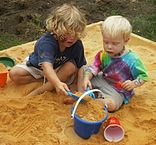Many parents know very well that toys and games play a vital role in a childs growth. Even so, it’s not easy to select the right toys for your children because of the numerous varieties of play supplies that are offered out there. One of the many things to consider will be the basic safety of the youngster while having fun with the toy and whether it’s suited to their age set.
So, really should youngsters use toys designed for older kids? Just before we are able to answer this, understanding the kind of toys and games suited to each age bracket is very important as children grow in phases and their capacity to perform specific tasks needs to be taken into consideration bearing in mind the fact that suggestions introduced may vary for each and every child.
1. Toys for New Born to 6 Months Old Infants
Babies are curious about their surroundings, follow people with their eyes, and prefer looking at faces and bright colors. They also like feeling their hands and feet, lifting their heads, turning towards sound, putting things in their mouths, etc.
Toys that suit this age group include:
• Things they can hold, squeeze, shake, suck, toys that make noise: e.g.- rattles, soft balls, dolls, plastic rings, pacifiers.
• Things they can listen to like board books, music box with lullabies nursery rhymes and songs.
• Things they can look at like pictures of people, objects hung where they can see them and plastic mirrors.
2. Toys for 7 to 12 Months Old Infants
At this age babies have the ability to roll over, sit, crawl, pull themselves up, stand, understand their names, utter some words, find, and move objects.
Toys that suit this age group include things that:
• They can drop and pick like balls, large beads, bowls.
• Can be used to build like cubes, children building blocks.
• Resemble real life things like toy cars, dolls, toy ducks that float in water.
• Flex their muscles especially toys that kids can pull and push. A few good examples would include large balls and soft things to crawl over.
3. Toys for 1 Year Old Children
At one year, children can walk, pronounce a few words, climb stairs, and play next to other children of the same age. They like tales and stories and need adults to watch them.
Toys that suit this age group include:
• Board books with photographs of real objects.
• Things with recordings of stories, rhymes, songs and pictures.
• Toys that resemble real life things like animals, cars, phones, bags, dolls, baby strollers and cotes, houses.
• Toys they can push and pull to text their muscles like large balls, toys with knobs and switches.
4. Toys for 2 Year Old Children
Two year old toddlers are now learning how to talk, can sense danger, and do a lot of physical activity like jumping, climbing, rolling, hanging from objects, have good control of hands and fingers, and like to play with small objects.
Toys that suit this age group include:
• Toys with things to solving like blocks that fit together, objects to sort like numbered cubes.
• Things for drawing like crayons, markers, paintbrushes, paper, chalk and chalkboard, and sound instruments for children.
• Things that resemble real life objects like transportation toys, child size furniture, dress up dolls, toys you can play with on sand and water.
• Things with pictures like children books and audio equipment like CD, DVD players with music and stories fit for them.
• Things that will make them use their muscles like balls they can kick and throw, toys they can ride, tunnels and climbing toys with soft underneath materials.
5. Toys for 3 to 6 Year Old Children
Three and six year old are kindergarten and pre-school going age, talk and ask a lot of questions. They experiment with things, like to play and share toys with other children and can concentrate on what they’re doing.
Toys suitable for this age group:
• Toys for solving problems like building bricks, more complex objects to sort collect and count.
• Toys for building complex structures like construction sets, transportation toys, dress up dolls, child furniture, puppets, sand, and water toys.
• Things for drawing, painting, cutting, like paper, paintbrushes, modeling dough and tools, paste, scissors, cloth, books, chalk and chalkboards, musical instruments like keyboards, tambourines, xylophones, maraca.
• Things that make them use their muscles like large and small balls for throwing, kicking and catching, tricycles, trailers and wagons for pulling and pushing, plastic bats and balls, targets with things to throw at etc.
Conclusion
It’s now obvious that children of different age do not have the same mental and motor skills therefore the choice of toys will depend on their age group. It’s therefore important to ensure that:
1) The toys are safe for the children
2) We understand the instructions on how to use them
3) The toys are of good quality
4) Toys can be cleaned easily
Checking for wear and tear over time is necessary as well to prevent safe toys from becoming hazardous.
